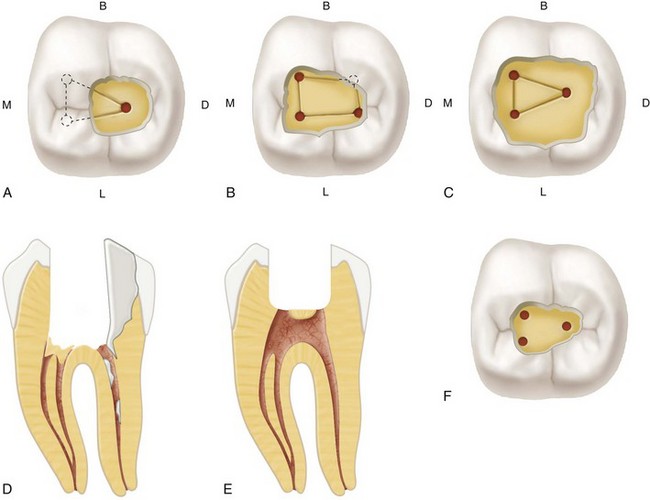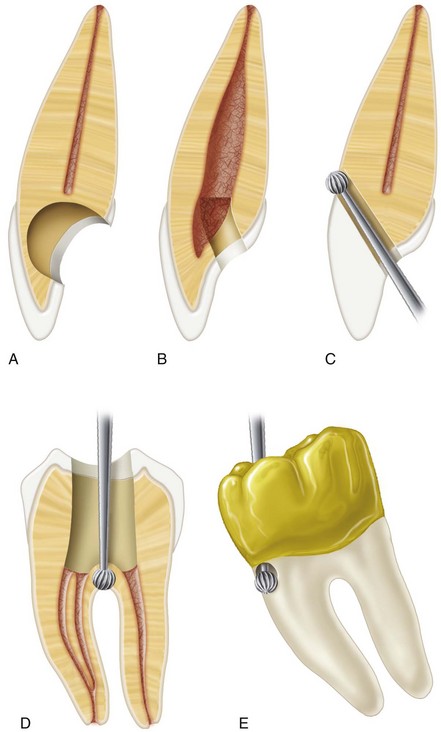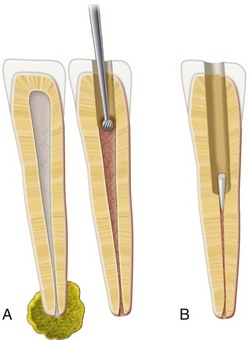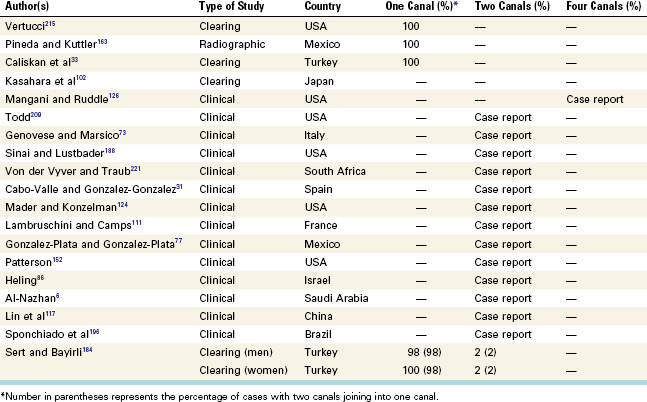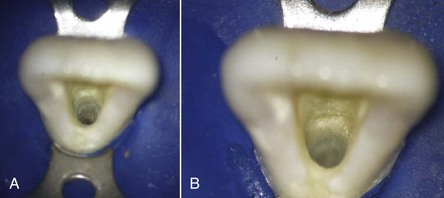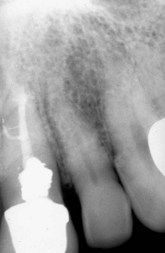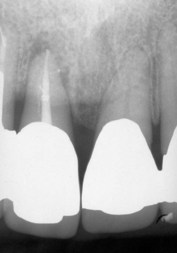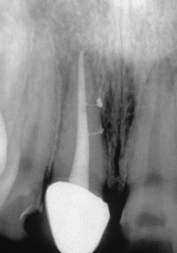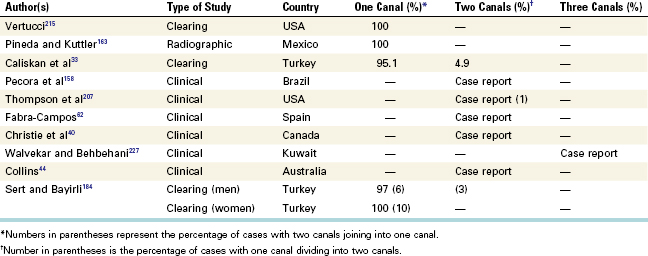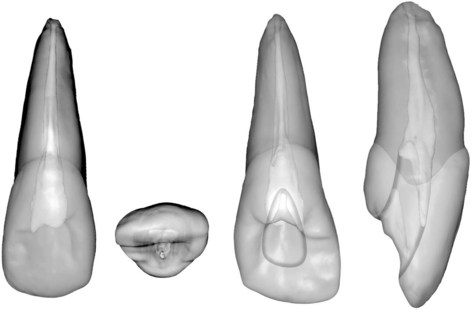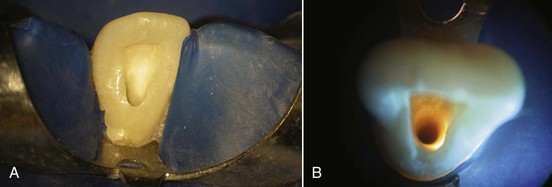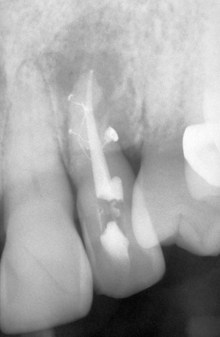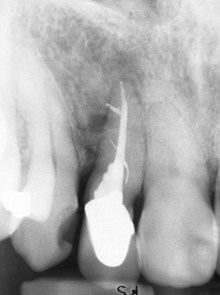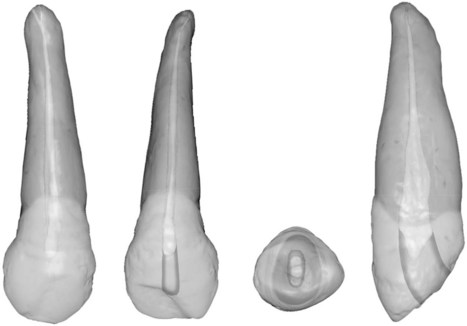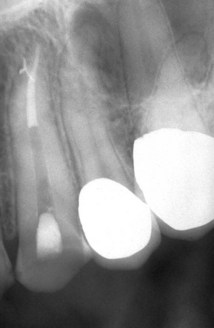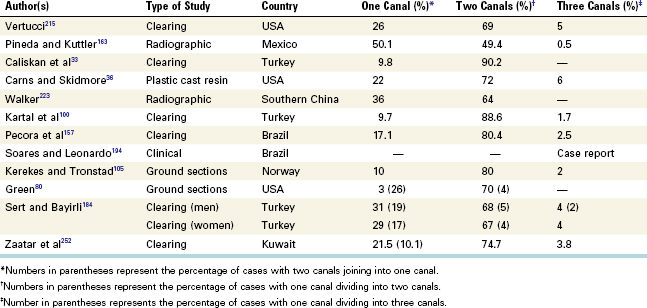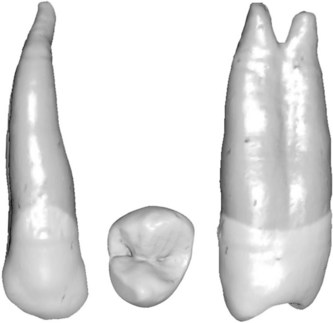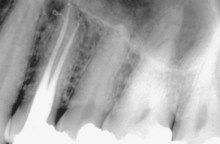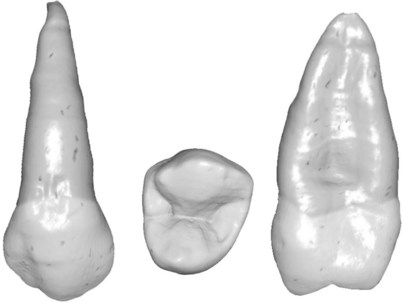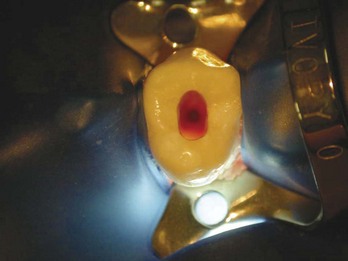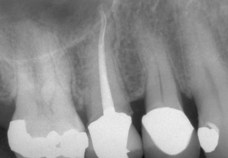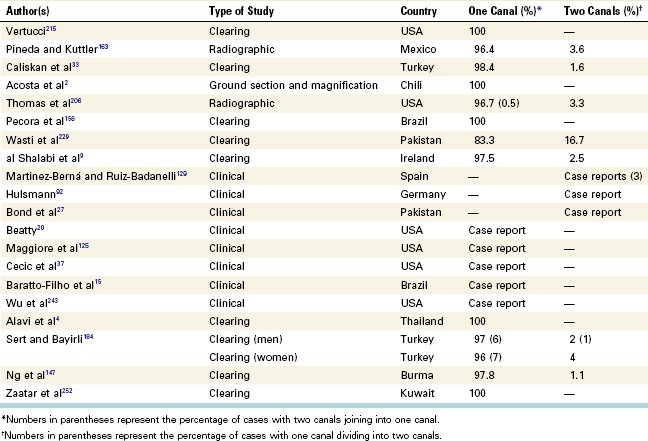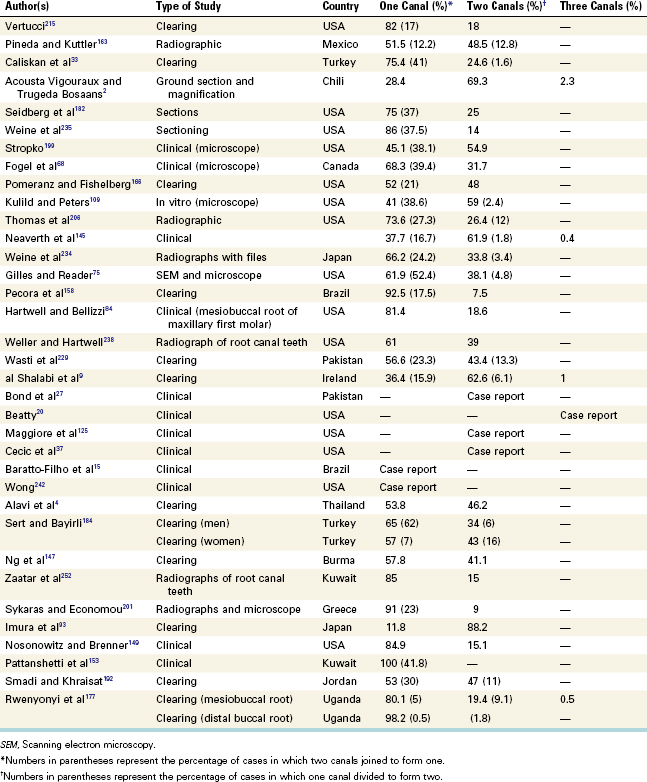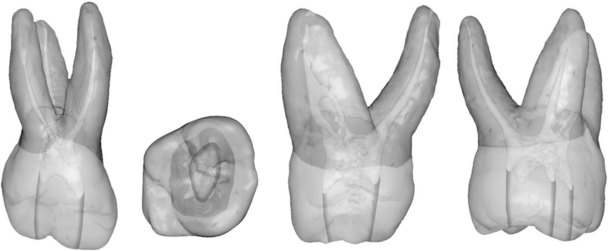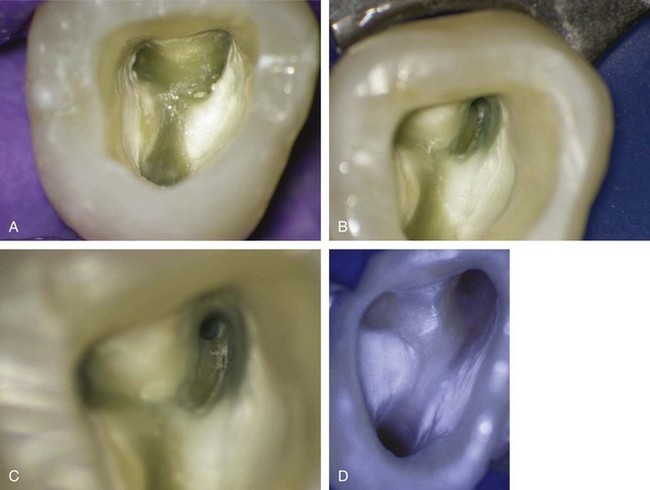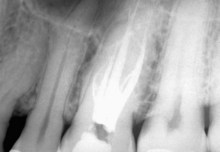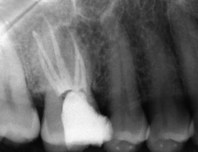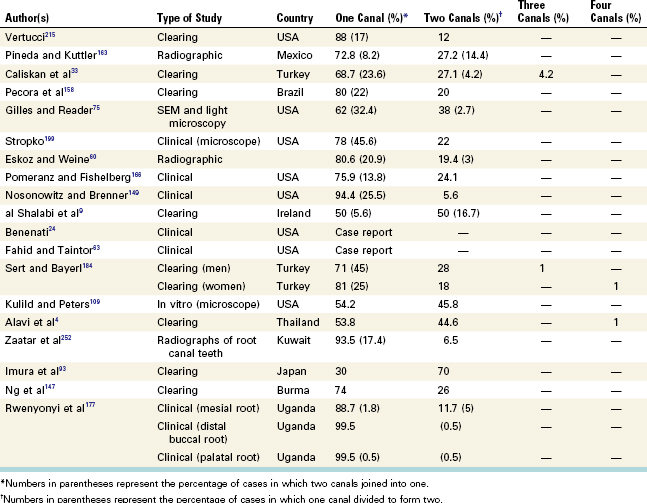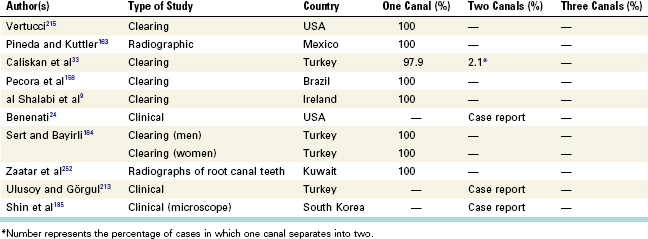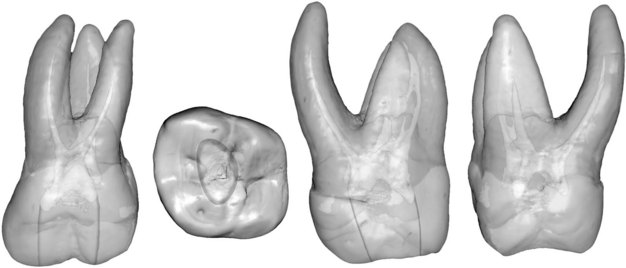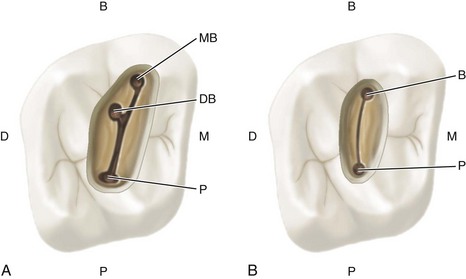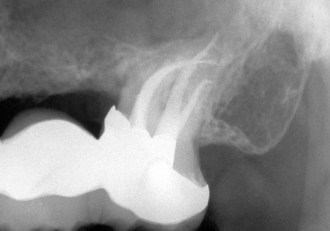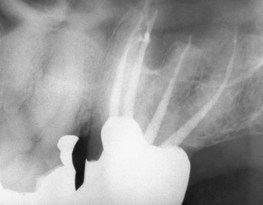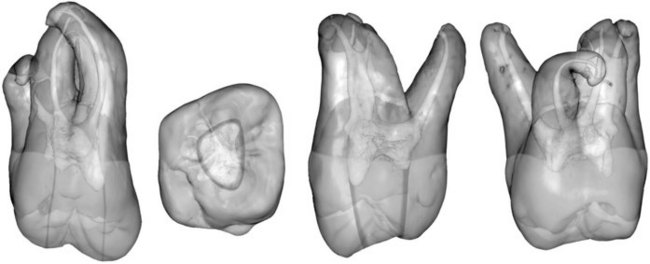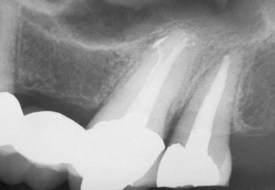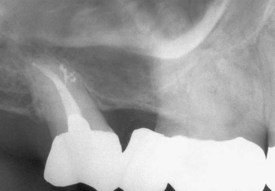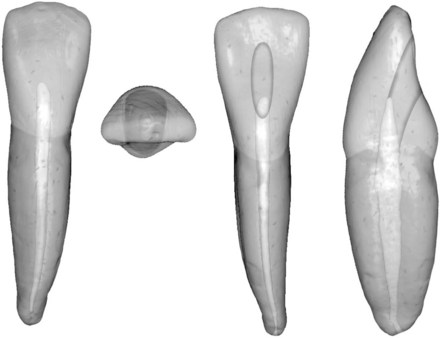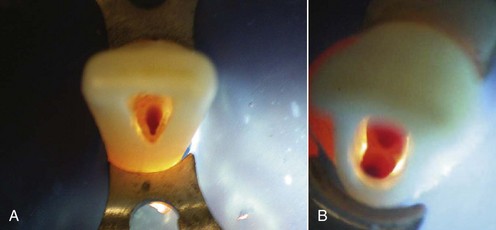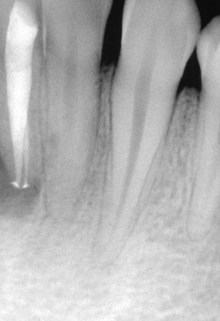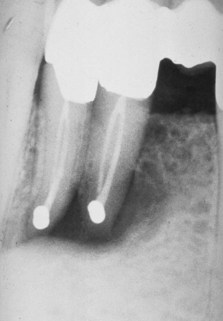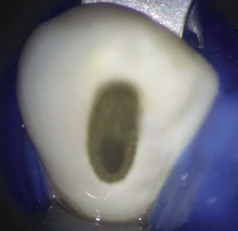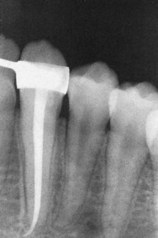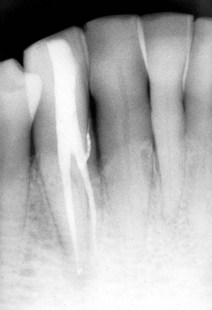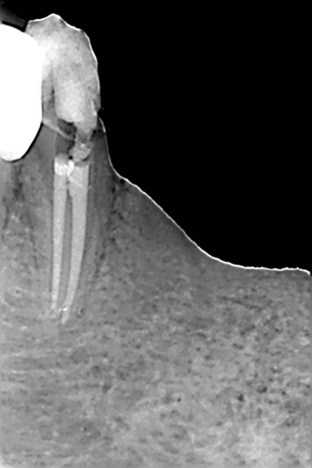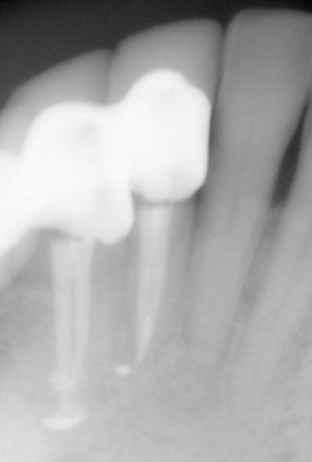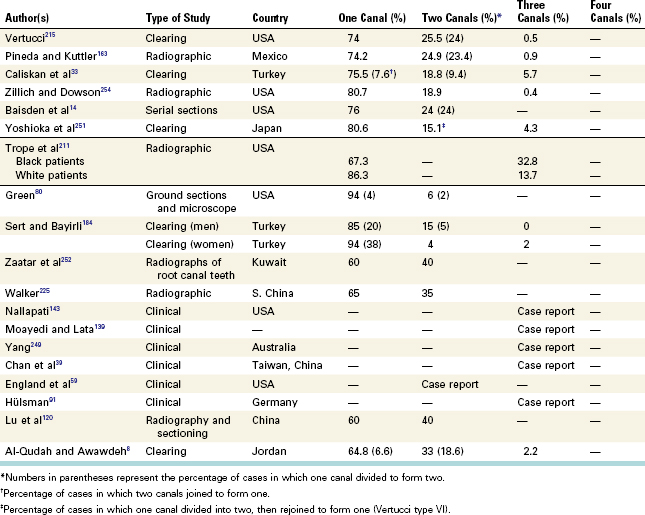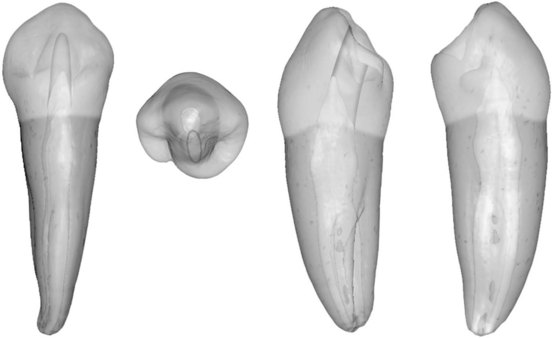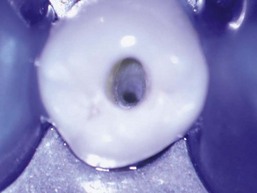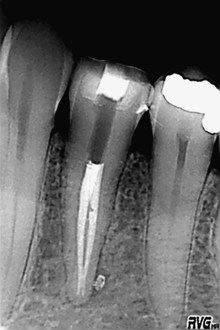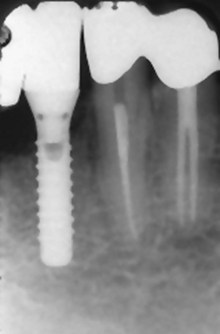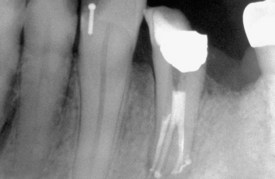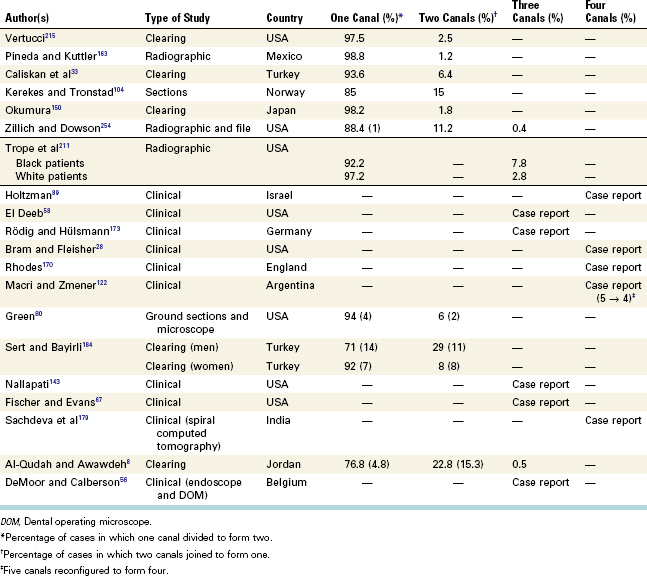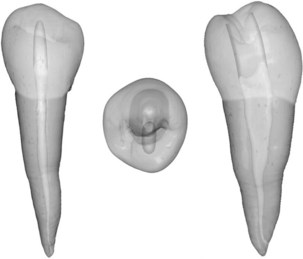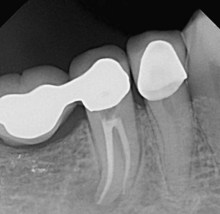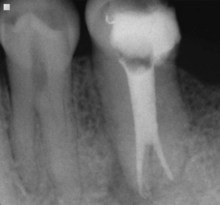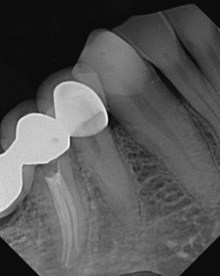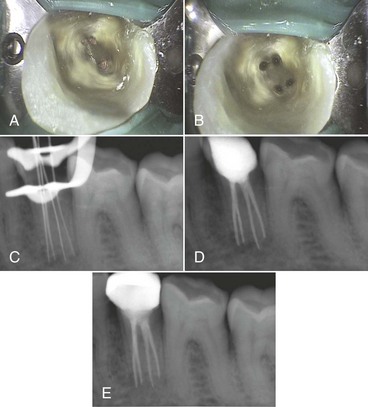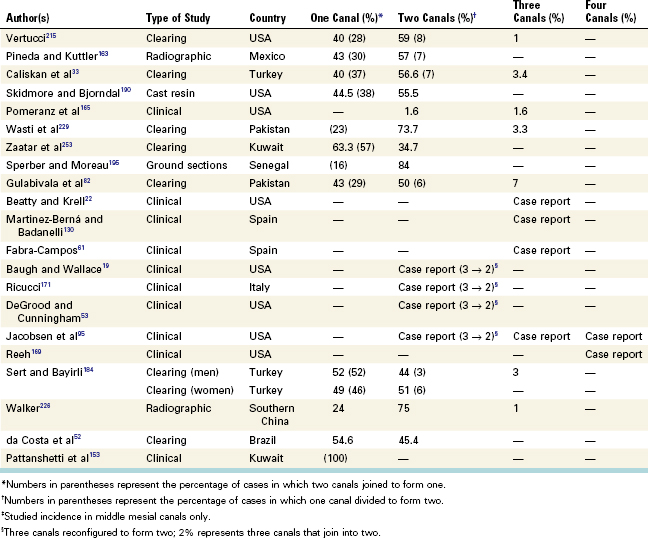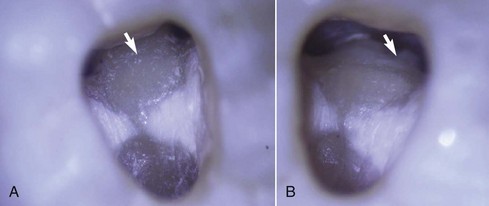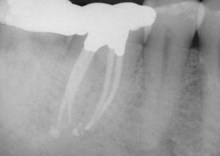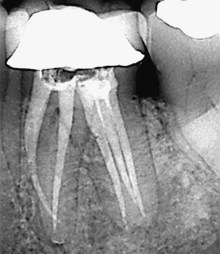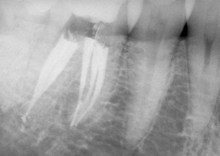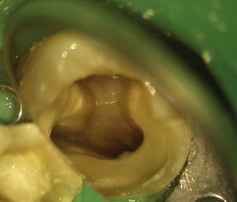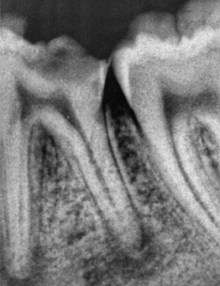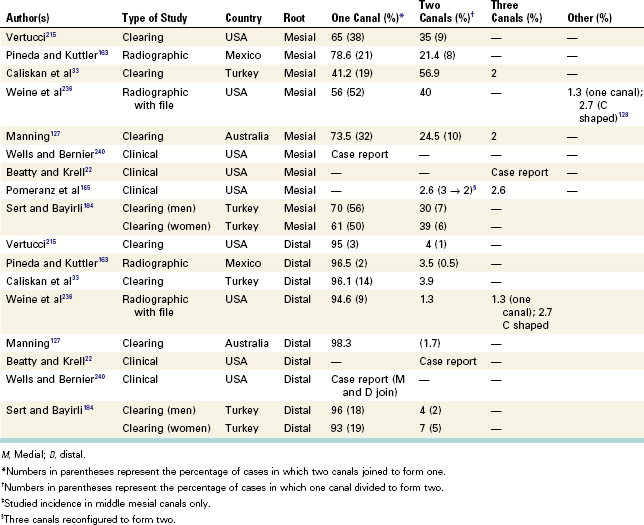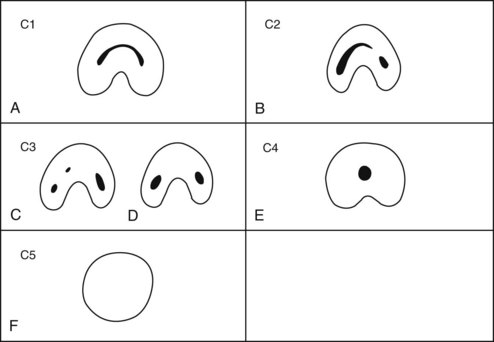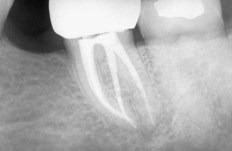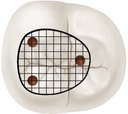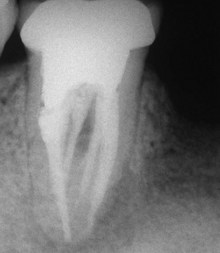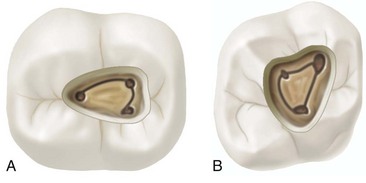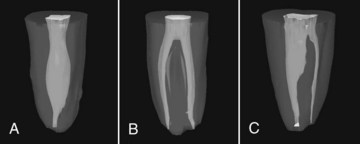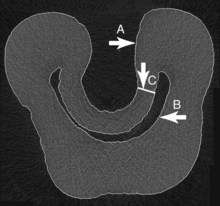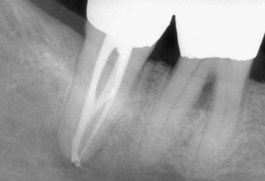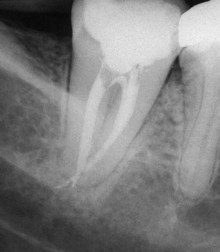1. Abbott PV. Assessing restored teeth with pulp and periapical diseases for the presence of cracks, caries, and marginal breakdown. Aust Dent J. 2004;49:33.
2. Acosta Vigouraux SA, Trugeda Bosaans SA. Anatomy of the pulp chamber floor of the permanent maxillary first molar. J Endod. 1978;4(7):214.
3. Alapati S, Zaatar EI, Shyama M, Al-Zuhair N. Maxillary canine with two root canals. Med Princ Pract. 2006;15:74.
4. Alavi AM, Opasanon A, Ng Y-L, Gulabivala K. Root and canal morphology of Thai maxillary molars. Int Endod J. 2002;35:478.
5. Al-Fougan KS. C-shaped root canals in mandibular second molars in a Saudi Arabian population. Int Endod J. 2002;34:499.
6. Al-Nazhan S. Two root canals in a maxillary central incisor with enamel hypoplasia. J Endod. 1991;17:469.
7. Al Nazhan S. Incidence of fourth canal in root canal treated mandibular first molars in a Saudi Arabian sub-population. Int Endod J. 1999;32:49.
8. Al-Qudah AA, Awawdeh LA. Root canal morphology of mandibular incisors in a Jordanian population. Int Endod J. 2006;39:873.
9. al Shalabi RM, Omer OE, Glennon J, Jennings M, Claffey NM. Root canal anatomy of maxillary first and second permanent molars. Int Endod J. 2000;33(5):405.
10. Awawheh L, Abdullah H, Al-Qudah A. Root forms and canal morphology of Jordanian maxillary first premolars. J Endod. 2008;34:956.
11. Awawdeh LA, Al-Qudah AA. Root form and canal morphology of mandibular premolars in a Jordanian population. Int Endod J. 2008;41:240.
12. Bahcall JK, Barss JT. Fiberoptic endoscope usage for intracanal visualization. J Endod. 2001;27(2):128.
13. Baldassari-Cruz LA, Lilly JP, Rivera EM. The influence of dental operating microscopes in locating the mesiolingual canal orifice. Oral Surg Oral Med Oral Pathol Oral Radiol Endod. 2002;93(2):190.
14. Baisden MK, Kulilid JC, Weller RN. Root canal configuration of the mandibular first premolar. J Endod. 1992;18(10):505.
15. Baratto-Filho F, Fariniuk LF, Ferreira EF, Pecora JD, Cruz-Filho AM, Sousa-Neto MD. Clinical and macroscopic study of maxillary molars with two palatal roots. Int Endod J. 2002;35(9):796.
16. Barbizam JVB, Ribeiro RG, Filho MT. Unusual anatomy of permanent maxillary molars. J Endod. 2004;30:668.
17. Barkhordar RA, Sapone J. Surgical treatment of a three-rooted maxillary second premolar: report of a case. Oral Surg Oral Med Oral Pathol. 1987;63(5):614.
18. Barnett F. Mandibular molar with C-shaped canal. Dent Traumatol. 1986;2:79.
19. Baugh D, Wallace J. Middle mesial canal of the mandibular first molar: a case report and literature review. J Endod. 2004;30(3):185.
20. Beatty RG. A five-canal maxillary first molar. J Endod. 1984;10(4):156.
21. Beatty RG, Interian CM. A mandibular first molar with five canals: report of case. J Am Dent Assoc. 1985;111(5):769.
22. Beatty RG, Krell K. Mandibular molars with five canals: report of two cases. J Am Dent Assoc. 1987;114(6):802.
23. Benjamin KA, Dowson J. Incidence of two root canals in human mandibular incisor teeth. Oral Surg Oral Med Oral Pathol. 1974;38(1):122.
24. Benenati FW. Maxillary second molars with two palatal canals and a palatogingival groove. J Endod. 1985;11(7):308.
25. Bjørndal L, Carlsen O, Thuesen G, Darvann T, Keriborg S. External and internal macromorphology in 3D reconstructed maxillary molars using computerized x-ray microtomography. Int Endod J. 1999;32(1):3.
26. Bolger WL, Schindler WG. A mandibular first molar with a C-shaped root configuration. J Endod. 1998;14(10):515.
27. Bond JL, Hartwell G, Portell FR. Maxillary first molar with six canals. J Endod. 1988;14(5):258.
28. Bram SM, Fleisher R. Endodontic therapy in a mandibular second bicuspid with four canals. J Endod. 1991;17(10):513.
29. Buhrley LJ, Barrows MJ, BeGole EA, Wenckus CS. Effect of magnification on locating the MB-2 canal in maxillary molars. J Endod. 2002;28(4):324.
30. Burch JG, Hulen S. The relationship of the apical foramen to the anatomic apex of the tooth root. Oral Surg Oral Med Oral Pathol. 1972;34(2):262.
31. Cabo-Valle M, Gonzalez-Gonzalez JM. Maxillary central incisor with two root canals: an unusual presentation. J Oral Rehabil. 2001;28(8):797.
32. Calberson FL, DeMoor RJ, Deroose CA. The radix entomolaris and paramolaris: a clinical approach in endodontics. J Endod. 2007;33:58.
33. Caliskan MK, Pehlivan Y, Sepetcioglu F, Turkun M, Tuncer SS. Root canal morphology of human permanent teeth in a Turkish population. J Endod. 1995;21(4):200.
34. Cambruzzi JV, Marshall FJ. Molar endodontic surgery. J Can Dent Assoc. 1983;1:61.
35. Card SJ, Sigurdsson A, Orstavik D, Trope M. The effectiveness of increased apical enlargement in reducing intracanal bacteria. J Endod. 2002;28(11):779.
36. Carnes EJ, Skidmore AE. Configurations and deviation of root canals of maxillary first premolars. Oral Surg Oral Med Oral Pathol. 1973;36(6):880.
37. Cecic P, Hartwell G, Bellizzi R. The multiple root canal system in the maxillary first molar: a case report. J Endod. 1982;8(3):113.
38. Chai WL, Thong YL. Cross-sectional morphology and minimum canal wall widths in C-shaped roots of mandibular molars. J Endod. 2004;30:509.
39. Chan K, Yew SC, Chao SY. Mandibular premolars with three root canals: two case reports. Int Endod J. 1992;25:261.
40. Christie WH, Peikoff MD, Acheson DW. Endodontic treatment of two maxillary lateral incisors with anomalous root formation. J Endod. 1981;7(11):528.
41. Christie WH, Peikoff MD, Fogel HM. Maxillary molars with two palatal roots: a retrospective clinical study. J Endod. 1991;17:80.
42. Cimilli H, Mumcu G, Cimilli T, Kartal N, Wesselink P. Correlation between root canal patterns. Oral Surg Oral Med Oral Pathol Oral Radiol Endod. 2006;102(2):e16.
43. Coelho de Carvalho MC, Zuolo ML. Orifice locating with a microscope. J Endod. 2000;26(9):532.
44. Collins IJ. Maxillary lateral incisor with two roots. Aust Endod J. 2001;27(1):37.
45. Contreras MA, Zinman EH, Kaplan SK. Comparison of the first file that fits at the apex before and after early flaring. J Endod. 2001;27(2):113.
46. Cooke HG, Cox FL. C-shaped canal configurations in mandibular molars. J Am Dent Assoc. 1979;99(5):836.
47. Coolidge ED. Anatomy of the root apex in relation to treatment problems. J Am Dent Assoc. 1929;16:1456.
48. Cunningham CJ, Senia ES. A three-dimensional study of canal curvature in the mesial roots of mandibular molars. J Endod. 1992;18:294.
49. Cutright DE, Bhaskar SN. Pulpal vasculature as demonstrated by a new method. Oral Surg Oral Med Oral Pathol. 1969;27:678.
50. Dankner E, Friedman S, Stabholz A. Bilateral C-shape configuration in maxillary first molars. J Endod. 1990;16(12):601.
51. D’Arcangelo C, Varvara G, De Fazio P. Root canal treatment in mandibular canines with two roots: a report of two cases. Int Endod J. 2001;34(4):331.
52. da Costa LF, Sousa Neto MD, Fidel SR. External and internal anatomy of mandibular molars. Braz Dent J. 1996;7:33.
53. DeGrood ME, Cunningham CJ. Mandibular molar with five canals: report of a case. J Endod. 1997;23(1):60.
54. DeMoor RJG. C-shaped root canal configuration in maxillary first molars. Int Endod J. 2002;35(2):200.
55. DeMoor RJ, Calberson FL. The radix entomolaris in mandibular first molars: an endodontic challenge. Int Endod J. 2004;37:789.
56. DeMoor RJG, Calberson FLG. Root canal treatment in a mandibular second premolar with three root canals. J Endod. 2005;31:310.
57. Dummer PMH, McGinn JH, Rees DG. The position and topography of the apical canal constriction and apical foramen. Int Endod J. 1984;17:192.
58. El Deeb ME. Three root canals in mandibular second premolars: literature review and a case report. J Endod. 1982;8(8):376.
59. England MCJr, Hartwell GR, Lance JR. Detection and treatment of multiple canals in mandibular premolars. J Endod. 1991;17:174.
60. Eskoz N, Weine FS. Canal configuration of the mesiobuccal root of the maxillary second molar. J Endod. 1995;21(1):38.
61. Fabra-Campos H. Unusual root anatomy of mandibular first molars. J Endod. 1985;11(12):568.
62. Fabra-Campos H. [Upper lateral incisor with two canals.]. Endodoncia. 1991;9(2):104.
63. Fahid A, Taintor JF. Maxillary second molar with three buccal roots. J Endod. 1988;14(4):181.
64. Fan B, Cheung GSP, Fan M, Gutmann JL, Bian Z. C-shaped canal system in mandibular second molars. I. Anatomical fractures. J Endod. 2004;30:899.
65. Fan B, Cheung GSP, Fan M, Gutmann JL, Fan W. C-shaped canal system in mandibular second molars. II. Radiographic. J Endod. 2004;30:904.
66. Ferreira CM, de Moraes IG, Bernardineli N. Three-rooted maxillary second premolar. J Endod. 2000;26(2):105.
67. Fischer GM, Evans CE. A three rooted mandibular second premolar. Gen Dent. 1992;40:139.
68. Fogel HM, Peikoff MD, Christie WH. Canal configuration in the mesiobuccal root of the maxillary first molar: a clinical study. J Endod. 1994;20(3):135.
69. Friedman S, Moshonov J, Stabholz A. Five root canals in a mandibular first molar. Dent Traumatol. 1986;2:226.
70. Funato A, Funato H, Matsumoto K. Mandibular central incisor with two root canals. Dent Traumatol. 1998;14(6):285.
71. Gani O, Visvisian C. Apical canal diameter in the first upper molar at various ages. J Endod. 1999;25(10):689.
72. Gao Y, Fan B, Cheung GSP, Gutmann JL, Fan M. C-shaped canal system in mandibular second molars. IV. Morphological analysis and transverse measurement. J Endod. 2006;32:1062.
73. Genovese FR, Marsico EM. Maxillary central incisor with two roots: a case report. J Endod. 2003;29(3):220.
74. Ghoddusi J, Naghavi N, Zarei M, Rohani E. Mandibular first molar with four distal canals. J Endod. 2007;33:1481.
75. Gilles J, Reader A. An SEM investigation of the mesiolingual canal in human maxillary first and second molars. Oral Surg Oral Med Oral Pathol. 1990;70(5):638.
76. Goel NK, Gill KS, Taneja JR. Study of root canal configuration in mandibular first permanent molars. J Indian Soc Pedod Prev Dent. 1991;8:12.
77. Gonzalez-Plata RR, Gonzalez-Plata EW. Conventional and surgical treatment of a two-rooted maxillary central incisor. J Endod. 2003;29:422.
78. Gopikrishna V, Reuben J, Kandaswamy D. Endodontic management of a maxillary first molar with two palatal roots and a fused buccal root diagnosed with spiral computed tomography: a case report. Oral Surg Oral Med Oral Pathol Oral Radiol Endod. 2008;105:e74.
79. Görduysus MO, Görduysus M, Friedman S. Operating microscope improves negotiation of second mesiobuccal canals in maxillary molars. J Endod. 2001;27(11):683.
80. Green D. Double canals in single roots. Oral Surg Oral Med Oral Pathol. 1973;35:689.
81. Gutierrez JH, Aguayo P. Apical foraminal openings in human teeth: number and location. Oral Surg Oral Med Oral Pathol Oral Radiol Endod. 1995;79:769.
82. Gulabivala K, Aung TH, Alavi A, Mg Y-L. Root and canal morphology of Burmese mandibular molars. Int Endod J. 2001;34:359.
83. Haddad GY, Nehma WB, Ounsi HF. Diagnosis, classification and frequency of C-shaped canals in mandibular second molars in the Lebanese population. J Endod. 1999;25:268.
84. Hartwell G, Bellizzi R. Clinical investigation of in vivo endodontically treated mandibular and maxillary molars. J Endod. 1982;8:555.
85. Haznedaroglu F, Ersev H, Odaba H, Yetkin G, Batur B, Asci S, et al. Incidence of patent furcal accessory canals in permanent molars of a Turkish population. Int Endod J. 2003;36(8):515.
86. Heling B. A two-rooted maxillary central incisor. Oral Surg Oral Med Oral Pathol. 1977;43:649.
87. Heling I, Gottlieb-Dadon I, Chandler NP. Mandibular canine with two roots and three root canals. Dent Traumatol. 1995;11(6):301.
88. Hess W, Zurcher E. The Anatomy of Root Canals of the Teeth of the Permanent and Deciduous Dentitions. New York: William Wood; 1925.
89. Holtzman L. Root canal treatment of mandibular second premolar with four root canals: a case report. Int Endod J. 1998;31(5):364.
90. Hsu Y, Kim S. The resected root surface: the issue of canal isthmuses. Dent Clin North Am. 1997;3:529.
91. Hülsman M. Mandibular first premolars with three root canals. Endod Dent Traumatol. 1990;6:189.
92. Hulsmann M. A maxillary first molar with two distobuccal root canals. J Endod. 1997;23(11):707.
93. Imura N, Hata GI, Toda T. Two canals in mesiobuccal roots of maxillary molars. Int Endod J. 1998;31:410.
94. Iqbal M, Fillmore I. Preoperative predictors of number of root canals clinically detected in maxillary molar: a PennEndo database study. J Endod. 2008;34:413-416.
95. Jacobsen EL, Dick K, Bodell R. Mandibular first molars with multiple mesial canals. J Endod. 1994;20(12):610.
96. Jenkins S, Kulild J, Williams K, Lyons W, Lee C. Sealing ability of three materials in the orifice of root canal systems obturated with gutta-percha. J Endod. 2006;32(3):225-227.
97. Joseph I, Varma BR, Bhat KM. Clinical significance of furcation anatomy of the maxillary first premolar: a biometric study on extracted teeth. J Periodontol. 1996;67:386.
98. Jurecko M, Vertucci FJ, Britto L. Effect of Sonic Oscillation on Canal Cleanliness: a Preliminary Study [Master’s Thesis]. Gainesville, FL: University of Florida; 2004.
99. Karagöz-Kucukay I. Root canal ramifications in mandibular incisors and efficacy of low-temperature injection thermoplasticized gutta-percha filling. J Endod. 1994;20(5):236.
100. Kartal N, Ozcelik B, Cimilli H. Root canal morphology of maxillary premolars. J Endod. 1998;24:417.
101. Kartal N, Yanikoglu FC. Root canal morphology of mandibular incisors. J Endod. 1992;18(11):562.
102. Kasahara E, Yasuda E, Yamamoto A, Anzai M. Root canal systems of the maxillary central incisor. J Endod. 1990;16(4):158.
103. Kerekes K, Tronstad L. Long-term results of endodontic treatment performed with a standardized technique. J Endod. 1979;5:83.
104. Kerekes K, Tronstad L. Morphometric observations in root canals of human premolars. J Endod. 1997;3:74.
105. Kerekes K, Tronstad L. Morphometric observations on root canals of human premolars. J Endod. 1998;3:417.
106. Kim S, Pecora G, Rubinstein R, Dorscher-Kim J. Color Atlas of Microsurgery in Endodontics. Philadelphia: WB Saunders; 2001.
107. Kotoku K. Morphological studies on the roots of the Japanese mandibular second molars. Shika Gakuho. 1985;85:43.
108. Krasner P, Rankow HJ. Anatomy of the pulp chamber floor. J Endod. 2004;30(1):5.
109. Kulild JC, Peters DD. Incidence and configuration of canal systems in the mesiobuccal root of maxillary first and second molars. J Endod. 1990;16(7):311.
110. Kuttler Y. Microscopic investigation of root apexes. J Am Dent Assoc. 1955;50:544.
111. Lambruschini GM, Camps J. A two-rooted maxillary central incisor with a normal clinical crown. J Endod. 1995;19(2):95.
112. Langeland K. Tissue Changes in the Dental Pulp: an Experimental Histologic Study. Oslo: Oslo University Press; 1957.
113. Langeland K. The histopathologic basis in endodontic treatment. Dent Clin North Am. 491, Nov, 1967.
114. Langeland K. Tissue response to dental caries. Dent Traumatol. 1987;3:149.
115. Langeland K. Reacción tisular a los materiales de obturación del conducto. In: Guldener PHA, Langeland K, editors. Endodoncia. Barcelona: Springer-Verlag Ibérica, 1995.
116. Leeb J. Canal orifice enlargement as related to biomechanical preparation. J Endod. 1983;9:463.
117. Lin W-C, Yang S-F, Pai S-F. Nonsurgical endodontic treatment of a two-rooted maxillary central incisor. J Endod. 2006;32:478.
118. Loh HS. Root morphology of the maxillary first premolar in Singaporeans. Aust Endod J. 1998;43:399.
119. Low D. Unusual maxillary second premolar morphology: a case report. Quintessence Int. 2001;32(8):626.
120. Lu T-Y, Yang S-F, Pai S-F. Complicated root canal morphology of mandibular first premolars in a Chinese population using cross section method. J Endod. 2006;32:932.
121. Lumley PJ, Walmsley AD, Walton RE, Rippin JW. Cleaning of oval canals using ultrasonics and sonic instrumentation. J Endod. 1993;19:453.
122. Macri E, Zmener O. Five canals in a mandibular second premolar. J Endod. 2000;26(5):304.
123. Madeira MC, Hetem S. Incidence of bifurcations in mandibular incisors. Oral Surg Oral Med Oral Pathol. 1973;36(4):589.
124. Mader CL, Konzelman JL. Double-rooted maxillary central incisors. Oral Surg Oral Med Oral Pathol. 1980;50(1):99.
125. Maggiore F, Jou YT, Kim S. A six canal maxillary first molar: case report. Int Endod J. 2002;35(5):486.
126. Mangani F, Ruddle CJ. Endodontic treatment of a “very particular” maxillary central incisor. J Endod. 1994;20(11):560.
127. Manning SA. Root canal anatomy of mandibular second molars. I. Int Endod J. 1990;23(1):34.
128. Manning SA. Root canal anatomy of mandibular second molars. II. C-shaped canals. Int Endod J. 1990;23(1):40.
129. Martinez-Berná A, Ruiz-Badanelli P. Maxillary first molars with six canals. J Endod. 1983;9(9):375.
130. Martinez-Berná A, Badanelli P. Mandibular first molars with six root canals. J Endod. 1985;11(8):348.
131. Martinez-Lozano MA, Forner-Navarro L, Sanchez-Cortes JL. Analysis of radiologic factors in determining premolar root canal systems. Oral Surg Oral Med Oral Pathol Oral Radiol Endod. 1999;88(6):719.
132. Mauger MJ, Waite RM, Alexander JB, Schindler WG. Ideal endodontic access in mandibular incisors. J Endod. 1999;25(3):206.
133. Melton DC, Krell KV, Fuller MW. Anatomical and histological features of C-shaped canals in mandibular second molars. J Endod. 1991;17:384.
134. Min Y, Fan B, Cheung GSP, Gutmann JL, Fan M. C-shaped canal system in mandibular second molars. III. The morphology of the pulp chamber floor. J Endod. 2006;32:1155.
135. Miyashita M, Kasahara E, Yasuda E, Yamamoto A, Sekizawa T. Root canal system of the mandibular incisor. J Endod. 1997;23(8):479.
136. Mizutani T, Ohno N, Nakamura H. Anatomical study of the root apex in the maxillary anterior teeth. J Endod. 1992;18(7):344.
137. Mjör IA, Nordahl I. The density and branching of dentinal tubules in human teeth. Arch Oral Biol. 1996;41:401.
138. Mjör IA, Smith MR, Ferrari M, Mannocei F. The structure of dentin in the apical region of human teeth. Int Endod J. 2001;34(5):346.
139. Moayedi S, Lata D. Mandibular first premolar with three canals. Endodontology. 2004;16:26.
140. Monnan G, Smallwood ER, Gulabivala K. Effects of access cavity location and design on degree and distribution of instrumented root canal surface in maxillary anterior teeth. Int Endod J. 2001;34:176.
141. Moreinis SA. Avoiding perforation during endodontic access. J Am Dent Assoc. 1979;98:707.
142. Morfis A, Sylaras SN, Georgopoulou M, Kernani M, Prountzos F. Study of the apices of human permanent teeth with the use of a scanning electron microscope. Oral Surg Oral Med Oral Pathol. 1994;77(2):172.
143. Nallapati S. Three canal mandibular first and second premolars: a treatment approach: a case report. J Endod. 2005;31:474.
144. Nattress BR, Martin DM. Predictability of radiographic diagnosis of variations in root canal anatomy in mandibular incisor and premolar teeth. Int Endod J. 1991;24(2):58.
145. Neaverth EJ, Kotler LM, Kaltenbach RF. Clinical investigation (in vivo) of endodontically treated maxillary first molars. J Endod. 1987;13(10):506.
146. Newton CW, McDonald S. A C-shaped canal configuration in a maxillary first molar. J Endod. 1984;10:397.
147. Ng YL, Aung TH, Alavi A, Gulabivala K. Root and canal morphology of Burmese maxillary molars. Int Endod J. 2001;34:620.
148. Nielsen CJ, Shahmohammadi K. The effect of mesio-distal chamber dimension on access preparation in mandibular incisors. J Endod. 2005;31:88-90.
149. Nosonowitz DM, Brenner MR. The major canals of the mesiobuccal root of the maxillary first and second molars. NY J Dent. 1973;43:12.
150. Okumura T. Anatomy of the root canals. Trans Seventh Int Dent Cong. 1926;1:170.
151. Orguneser A, Kartal N. Three canals and two foramina in a mandibular canine. J Endod. 1998;24(6):444.
152. Patterson JM. Bifurcated root of upper central incisor. Oral Surg Oral Med Oral Pathol. 1970;29:222.
153. Pattanshetti N, Gaidhane M, Al Kandari AM. Root and canal morphology of the mesiobuccal and distal roots of permanent first molars in a Kuwait population: a clinical study. Int Endod J. 2008;41(9):755.
154. Pecora JD, Santana SVS. Maxillary lateral incisor with two roots: case report. Braz Dent J. 1991;2(2):151.
155. Pecora JD, Saquy PC, Sousa Neto MD, Woelfel JB. Root form and canal anatomy of maxillary first premolars. Braz Dent J. 1991;2(2):87.
156. Pecora JD, Sousa Neto MD, Saquy PC, Woelfel JB. In vitro study of root canal anatomy of maxillary second premolars. Braz Dent J. 1992;3(2):81.
157. Pecora JD, Sousa Neto MD, Saquy PC. Internal anatomy, direction and number of roots and size of mandibular canines. Braz Dent J. 1993;4:53.
158. Pecora JD, Woelfel JB, Sousa Neto MD, Issa EP. Morphologic study of the maxillary molars. II. Internal anatomy. Braz Dent J. 1992;3(1):53.
159. Peikoff MD, Christie WH, Fogel HM. The maxillary second molar: variations in the number of roots and canals. Int Endod J. 1996;29(6):365.
160. Peters OA, Laib A, Gohring TN, Barbakow F. Changes in root canal geometry after preparation assessed by high-resolution computed tomography. J Endod. 2001;27(1):1.
161. Peters OA, Laib A, Rüegsegger P, Barbakow F. Three-dimensional analysis of root canal geometry by high resolution computed tomography. J Dent Res. 2000;79(6):1405.
162. Peters OA, Peters CI, Schonenberger K, Barbakaw F. ProTaper rotary root canal preparation: assessment of torque force in relation to canal anatomy. Int Endod J. 2003;36(2):93.
163. Pineda F, Kuttler Y. Mesiodistal and buccolingual roentgenographic investigation of 7275 root canals. Oral Surg Oral Med Oral Pathol. 1972;33:101.
164. Plotino G. A mandibular third molar with three mesial roots: a case report. J Endod. 2008;34:224.
165. Pomeranz H, Eidelman DL, Goldberg MG. Treatment considerations of the middle mesial canal of mandibular first and second molars. J Endod. 1981;7(12):565.
166. Pomeranz H, Fishelberg G. The secondary mesiobuccal canal of maxillary molars. J Am Dent Assoc. 1974;88:119.
167. Ponce EH, Vilar Fernandez JA. The cemento-dentino-canal junction, the apical foramen, and the apical constriction: evaluation by optical microscopy. J Endod. 2003;29(3):214.
168. Rankine-Wilson RW, Henry P. The bifurcated root canal in lower anterior teeth. J Am Dent Assoc. 1965;70(5):1162-1165.
169. Reeh ES. Seven canals in a lower first molar. J Endod. 1998;24(7):497.
170. Rhodes JS. A case of an unusual anatomy of a mandibular second premolar with four canals. Int Endod J. 2001;34(8):645.
171. Ricucci D. Three independent canals in the mesial root of a mandibular first molar. Dent Traumatol. 1997;13(1):47.
172. Ricucci D, Langeland K. Apical limit of root canal instrumentation and obturation. 2. A histologic study. Int Endod J. 1998;31(6):394.
173. Rödig T, Hülsmann M. Diagnosis and root canal treatment of a mandibular second premolar with three root canals. Int Endod J. 2003;36(12):912.
174. Rödig T, Hülsmann M, Mühge M, Schäfers F. Quality of preparation of oval distal root canals in mandibular molars using nickel–titanium instruments. Int Endod J. 2002;35:919.
175. Rubinstein R, Kim S. Short-term observation of the results of endodontic surgery with the use of a surgical operating microscope and Super EBA as root-end filling material. J Endod. 1999;25:43.
176. Rubinstein R, Kim S. Long-term follow-up of cases considered healing 1 year after apical microsurgery. J Endod. 2002;28:378.
177. Rwenyonyi CM, Kutesa AM, Muwazi LM, Buwembo W. Root and canal morphology of maxillary first and second permanent molar teeth in a Ugandan population. Int Endod J. 2007;40:679.
178. Saad AY, Al-Yahya AS. The location of the cementodentinal junction in single-rooted mandibular first premolars from Egyptian and Saudi patients: a histologic study. Int Endod J. 2003;36:541.
179. Sachdeva GS, Ballal S, GopiKrishna V, Kandas Wamy D. Endodontic management of a mandibular second premolar with four roots and four root canals with the aid of spiral computed tomography: a case report. J Endod. 2008;34:104.
180. Schilder H. Filling root canals in three dimensions. Dent Clin North Am. 723, Nov 1967.
181. Schwarze T, Baethge C, Stecher T, Geurtsen W. Identification of second canals in the mesiobuccal root of maxillary first and second molars using magnifying loupes or an operating microscope. Aust Endod J. 2002;28(2):57.
182. Seidberg BH, Altman M, Guttuso J, Suson M. Frequency of two mesiobuccal root canals in maxillary first molars. J Am Dent Assoc. 1973;87:852.
183. Seo MS, Park DS. C-shaped root canals of mandibular second molars in a Korean population: clinical observation and in vitro analysis. Int Endod J. 2004;37(2):139.
184. Sert S, Bayirli GS. Evaluation of the root canal configurations of the mandibular and maxillary permanent teeth by gender in the Turkish population. J Endod. 2004;30(6):391.
185. Shin SJ, Park JW, Lee JK, Hwang SW. Unusual root canal anatomy in maxillary second molars: two case reports. Oral Surg Oral Med Oral Pathol Oral Radiol Endod. 2007;104:e61.
186. Sidow SJ, West LA, Liewehr FR, Loushine RJ. Root canal morphology of human maxillary and mandibular third molars. J Endod. 2000;26(11):675.
187. Simon JHS. The apex: how critical is it? Gen Dent. 1994;42:330.
188. Sinai IH, Lustbader S. A dual-rooted maxillary central incisor. J Endod. 1984;10(3):105.
189. Sjögren U, Hägglund B, Sundqvist G, Wing K. Factors affecting the long-term results of endodontic treatment. J Endod. 1990;16:498.
190. Skidmore AE, Bjorndal AM. Root canal morphology of the human mandibular first molar. Oral Surg Oral Med Oral Pathol. 1971;32(5):778.
191. Slowey RE. Root canal anatomy: road map to successful endodontics. Dent Clin North Am. 1979;23(4):555.
192. Smadi L, Khraisat A. Detection of a second mesiobuccal canal in the mesiobuccal roots of maxillary first molar teeth. Oral Surg Oral Med Oral Pathol Oral Radiol Endod. 2007;103:e77.
193. Smulson MH, Hagen JC, Ellenz SJ. Pulpoperiapical pathology and immunologic considerations. In Weine FS, editor: Endodontic Therapy, ed 5, St. Louis: Mosby, 1996.
194. Soares JA, Leonardo RT. Root canal treatment of three-rooted maxillary first and second premolars: a case report. Int Endod J. 2003;36(10):705.
195. Sperber GH, Moreau JL. Study of the number of roots and canals in Senegalese first permanent mandibular molars. Int Endod J. 1998;31(2):117.
196. Sponchiado EC, Ismail HAA, Braga MRL, de Carvalho FK, Simoes CACG. Maxillary central incisor with two-root canals: a case report. J Endod. 2006;32:1002.
197. Stabholz A, Goultschin J, Friedman S, Korenhouser S. Crown-to-root ratio as a possible indicator of the presence of a fourth root canal in maxillary first molars. Israel J Dent Sci. 1984;1:85.
198. Stroner WF, Remeikis NA, Carr GB. Mandibular first molar with three distal canals. Oral Surg Oral Med Oral Pathol. 1984;57(5):554.
199. Stropko JJ. Canal morphology of maxillary molars: clinical observations of canal configurations. J Endod. 1990;25:446.
200. Subay RK, Kayatas M. Dens invaginatus in an immature lateral incisor: a case report of complex endodontic treatment. Oral Surg Oral Med Oral Pathol Oral Radiol Endod. 2006;102:e37.
201. Sykaras S, Economou P. [Root canal morphology of the mesio-buccal root of the maxillary first molar.]. Odontostomatol Proodos. 1970;24:99.
202. Tamse A, Katz A, Pilo R. Furcation groove of buccal root of maxillary first premolars: a morphometric study. J Endod. 2000;26:359.
203. Taylor GN. Techniiche per la preparazione e l’otturazione intracanalare. La Clinica Odontoiatrica del Nord America. 1988;20(3):566.
204. Teixeira FB, Sano CL, Gomes BP, Zara AA, Ferraz CC, Souza-Filho FJ. A preliminary in vitro study of the incidence and position of the root canal isthmus in maxillary and mandibular first molars. Int Endod J. 2003;36(4):276.
205. Thews ME, Kemp WB, Jones CR. Aberrations in palatal root and root canal morphology of two maxillary first molars. J Endod. 1979;5(3):94.
206. Thomas RP, Moule AJ, Bryant R. Root canal morphology of maxillary permanent first molar teeth at various ages. Int Endod J. 1993;26(5):257.
207. Thompson BH, Portell FR, Hartwell GR. Two root canals in a maxillary lateral incisor. J Endod. 1985;11(8):353.
208. Tidmarsh BG, Arrowsmith MG. Dentinal tubules at the root ends of apicected teeth: a scanning electron microscope study. Int Endod J. 1989;22:184.
209. Todd HW. Maxillary right central incisor with two root canals. J Endod. 1976;2(8):227.
210. Torabinejad M, Walton R. Endodontics: Principles and Practice, ed 4. St. Louis: Saunders; 2009.
211. Trope M, Elfenbein L, Tronstad L. Mandibular premolars with more than one root canal in different race groups. J Endod. 1986;12(8):343.
212. Tu M-G, Tsai C-C, Jou M-J, Chen W-L, Chang Y-F, Chen S-Y, et al. Prevalence of three rooted mandibular first molars among Taiwanese individuals. J Endod. 2007;33:1163.
213. Ulusoy OI, Görgül G. Endodontic treatment of a maxillary second molar with two palatal roots: a case report. Oral Surg Oral Med Oral Pathol Oral Radiol Endod. 2007;104(4):e95.
214. Usman N, Baumgartner JC, Marshall JG. Influence of instrument size on root canal debridement. J Endod. 2004;30(2):110.
215. Vertucci FJ. Root canal anatomy of the human permanent teeth. Oral Surg Oral Med Oral Pathol. 1984;58:589.
216. Vertucci FJ, Anthony RL. A scanning electron microscopic investigation of accessory foramina in the furcation and pulp chamber floor of molar teeth. Oral Surg Oral Med Oral Pathol. 1986;62:319.
217. Vertucci FJ, Beatty RG. Apical leakage associated with retrofilling techniques: a dye study. J Endod. 1986;12:331.
218. Vertucci FJ, Seelig A, Gillis R. Root canal morphology of the human maxillary second premolar. Oral Surg Oral Med Oral Pathol. 1974;38:456.
219. Vertucci FJ, Williams RG. Furcation canals in the human mandibular first molar. Oral Surg Oral Med Oral Pathol. 1974;38:308.
220. Von der Lehr WN, Marsh RA. A radiographic study of the point of endodontic egress. Oral Surg Oral Med Oral Pathol Oral Radiol Endod. 1973;35:705.
221. Von der Vyver PJ, Traub AJ. Maxillary central incisor with two root canals: a case report. J Dent Assoc South Afr. 1995;50(3):132.
222. Wada M, Takase T, Nakanuma K, Arisue K, Nagahama F, Yamazaki M. Clinical study of refractory apical periodontitis treated by apicoectomy. 1. Root canal morphology of resected apex. Int Endod J. 1998;31:53.
223. Walker RT. Root form and canal anatomy of maxillary first premolars in a southern Chinese population. Dent Traumatol. 1987;3:130.
224. Walker RT. Root form and canal anatomy of mandibular first molars in a southern Chinese population. Dent Traumatol. 1988;4:19.
225. Walker RT. Root form and canal anatomy of mandibular first premolars in a southern Chinese population. Dent Traumatol. 1988;4:226.
226. Walker RT. The root canal anatomy of mandibular incisors in a southern Chinese population. Int Endod J. 1988;21:218.
227. Walvekar SV, Behbehani JM. Three root canals and dens formation in a maxillary lateral incisor: a case report. J Endod. 1997;23(3):185.
228. Warren EM, Laws AJ. The relationship between crown size and the incidence of bifid root canals in mandibular incisor teeth. Oral Surg Oral Med Oral Pathol. 1981;52(4):425.
229. Wasti F, Shearer AC, Wilson NH. Root canal systems of the mandibular and maxillary first permanent molar teeth of South Asian Pakistanis. Int Endod J. 2001;34(4):263.
230. Webber RT, del Rio CE, Brady JM, Segall RO. Sealing quality of a temporary filling material. Oral Surg Oral Med Oral Pathol. 1978;46(1):123.
231. Weine FS. Case report: three canals in the mesial root of a mandibular first molar. J Endod. 1982;8(11):517.
232. Weine FS, editor Endodontic Therapy ed 5 1996 Mosby St. Louis 243
233. Weine FS. members of the Arizona Endodontic Association: The C-shaped mandibular second molar: incidence and other considerations. J Endod. 1998;24(5):372.
234. Weine FS, Hayami S, Hata G, Toda T. Canal configuration of the mesiobuccal root of the maxillary first molar of a Japanese subpopulation. Int Endod J. 1999;32(2):79.
235. Weine FS, Healy HJ, Gerstein H, Evanson L. Canal configuration in the mesiobuccal root of the maxillary first molar and its endodontic significance. Oral Surg Oral Med Oral Pathol. 1969;28:419.
236. Weine FS, Pasiewicz RA, Rice RT. Canal configuration of the mandibular second molar using a clinically oriented in vitro method. J Endod. 1988;14(5):207.
237. Weisman MI. A rare occurrence: a bi-rooted upper canine. Aust Endod J. 2000;26:119.
238. Weller RN, Hartwell G. The impact of improved access and searching techniques on detection of the mesiolingual canal in maxillary molars. J Endod. 1989;15:82.
239. Weller NR, Niemczyk SP, Kim S. Incidence and position of the canal isthmus. 1. Mesiobuccal root of the maxillary first molar. J Endod. 1995;21:380.
240. Wells DW, Bernier WE. A single mesial canal and two distal canals in a mandibular second molar. J Endod. 1984;10(8):400.
241. Wilcox LR, Walton RE, Case WB. Molar access: shape and outline according to orifice location. J Endod. 1989;15(7):315.
242. Wong M. Maxillary first molar with three palatal canals. J Endod. 1991;17(6):298.
243. Wu M-K, Barkis D, R’oris A, Wesselink PR. Does the first file to bind correspond to the diameter of the canal in the apical region? Int Endod J. 2002;35:264.
244. Wu M-K, R’oris A, Barkis D, Wesselink PR. Prevalence and extent of long oval canals in the apical third. Oral Surg Oral Med Oral Pathol Oral Radiol Endod. 2000;89:739.
245. Wu M-K, Wesselink PR. A primary observation on the preparation and obturation of oval canals. Int Endod J. 2001;34:137.
246. Wu M-K, Wesselink P, Walton R. Apical terminus location of root canal treatment procedures. Oral Surg Oral Med Oral Pathol Oral Radiol Endod. 2000;89:99.
247. Yang Z-P, Yang S-F, Lee G. The root and root canal anatomy of maxillary molars in a Chinese population. Dent Traumatol. 1998;4:215.
248. Yang Z-P, Yang S-F, Lin YL. C-shaped root canals in mandibular second molars in a Chinese population. Dent Traumatol. 1988;4:160.
249. Yang ZP. Multiple canals in a mandibular first premolar: case report. Aust Dent J. 1994;39:18.
250. Yew SC, Chan K. A retrospective study of endodontically treated mandibular first molars in a Chinese population. J Endod. 1993;19:471.
251. Yoshioka T, Villegas JC, Kobayashi C, Suda H. Radiographic evaluation of root canal multiplicity in mandibular first premolars. J Endod. 2004;30(2):73.
252. Zaatar EI, Al-Kandari AM, Alhomaidah S, Al Yasin IM. Frequency of endodontic treatment in Kuwait: radiographic evaluation of 846 endodontically treated teeth. J Endod. 1997;23:453.
253. Zaatar EI, al Anizi SA, al Duwairi Y. A study of the dental pulp cavity of mandibular first permanent molars in the Kuwait population. J Endod. 1998;24(2):125.
254. Zillich R, Dowson J. Root canal morphology of mandibular first and second premolars. Oral Surg Oral Med Oral Pathol. 1973;36(5):738.
